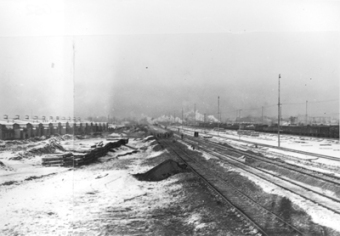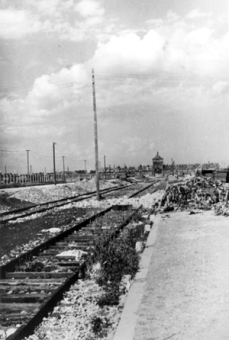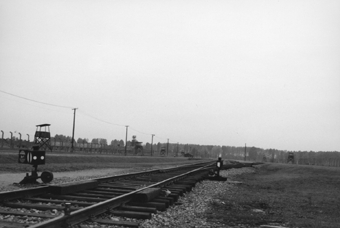Deportations to Auschwitz-Birkenau

© National Archives, Washington, DC

© National Archives, Washington, DC

© Matthias Naumann
The Auschwitz-Birkenau extermination camp was a destination for deportation trains carrying Jews from all across Europe. Headed by Adolf Eichmann (1906–1962), Unit IVB4 (the Judenreferat, or “Jew Unit”) of the Reich Security Main Office (Reichssicherheitshauptamt, RSHA) in Berlin was in charge of organizing these German Reichsbahn transports, known as Sonderzüge, or “special trains.”
In the months March–June 1942, the transports reaching Auschwitz were not yet subject to a selection process. The Jewish women deported from Slovakia were placed by the SS in the “women’s concentration camp” in Auschwitz I. The first transport arriving from Paris, in late March 1942, also was placed intact into the camp. In early July 1942, however, the camp management began to select certain members of the groups of Jews. Those whom the SS deemed “fit for work” were added to the camp population. Those who, in the eyes of the SS leaders, were unsuitable for the designated purpose of forced labor—old people, the sick, women with children—were taken from the ramp to the gas chambers and murdered with poison gas.
The deportation transports originated in France (69,000 Jews), the Netherlands (60,000 Jews), Belgium (25,000 Jews), Germany/Austria (23,000 Jews), Italy (7,500 Jews), Norway (690 Jews), Slovakia (27,000 Jews), the Protectorate of Bohemia and Moravia/Theresienstadt ghetto (46,000 Jews), Yugoslavia (10,000 Jews), Greece (55,000 Jews), Poland (300,000 Jews), and Hungary (438,000 Jews).
Approximately 650 RSHA transports carrying more than one million Jews were routed to Auschwitz-Birkenau for extermination.
At the Old Ramp at the freight depot of Auschwitz, and after May 1944 at the New Ramp inside the Birkenau extermination camp, SS men bullied and forced the people out of the German Reichsbahn freight cars and robbed them of their last remaining possessions. After the subsequent selection, conducted at first by SS men from the camp administration and later mostly by SS physicians, the guard details escorted the weak, the elderly, the sick, children, adolescents, and pregnant women directly to the gas chambers.
The 15 to 30 percent of the deportees who survived the selections were registered. Their hair was shorn, and a prisoner number was tattooed on each person’s forearm. Next, often after a so-called quarantine period, they were distributed among the various camps, including the Buna/Monowitz concentration camp. They were assigned to work detachments and had to perform forced labor in I.G. Auschwitz or elsewhere. Once they were no longer physically able to work, the SS sent them, too, to the gas chambers.
(WR; transl. KL)
















